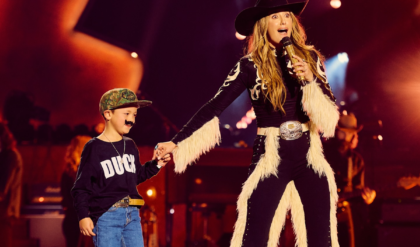In the high-stakes arena of technological innovation, where billionaires battle for supremacy not with words or tweets but with machines that walk, talk, and think, a new chapter has unfolded. Mark Zuckerberg, the meta-verse maestro behind Meta Platforms, and Elon Musk, the rocket-fueled disruptor at Tesla, have ignited a fierce competition in the world of humanoid robots. As of late September 2025, whispers from Silicon Valley suggest this rivalry—once confined to cage-fight memes and social media skirmishes—has escalated into a full-blown arms race for artificial intelligence embodied in human form. Zuckerberg’s Meta is pouring billions into AI-driven software and sensors, leveraging its vast ecosystem of wearables to train robots on real-world human behaviors. Musk, ever the showman, is scaling up production of Tesla’s Optimus, promising thousands of units by year’s end that could transform factories and homes alike. But in this clash of titans, who emerges victorious? The answer lies not just in engineering prowess but in vision, execution, and the unpredictable alchemy of data and ambition.
The roots of this showdown trace back to a shared obsession: the belief that humanoid robots aren’t mere gadgets but the next evolutionary leap for humanity. Elon Musk first teased the concept in August 2021 at Tesla’s AI Day, unveiling a mock-up of what would become Optimus—a bipedal bot designed to tackle “unsafe, repetitive, or boring” tasks. Standing at 5 feet 8 inches and weighing 125 pounds, Optimus was pitched as a general-purpose assistant, powered by the same neural networks that drive Tesla’s Full Self-Driving software. Musk’s pitch was audacious: this robot could eclipse Tesla’s car business, generating trillions in revenue by automating labor on a planetary scale. Fast-forward to 2025, and Optimus has evolved from a dancing prototype in a spandex suit to a fleet of prototypes roaming Tesla factories, sorting batteries and folding shirts with eerie precision.
Musk’s updates on X (formerly Twitter) paint a picture of relentless progress. In early September 2025, he clarified that a gleaming gold version spotted in demos was merely “V2.5″—an iterative tweak, not the full reveal of the “sublime” Gen 3 model. Videos show Optimus navigating uneven terrain with a natural heel-to-toe gait, lifting 45 pounds effortlessly, and even chatting in a kawaii anime-inspired voice mode powered by xAI’s Grok. Tesla’s edge? Unmatched data troves from its 8 million vehicles, which capture billions of hours of real-world motion and interaction. This “fleet learning” translates directly to robotics: Optimus learns to dodge obstacles much like a Cybertruck avoids potholes. Musk envisions low-volume production for internal use by late 2025—aiming for 5,000 units—followed by high-volume sales in 2026 at around $20,000 to $30,000 per bot. By 2040, he predicts 10 billion humanoids worldwide, outnumbering humans and propelling Tesla to a $25 trillion valuation. It’s a gambler’s bet: Optimus as the ultimate force multiplier, from Mars colonies (with a potential uncrewed mission in 2026) to mundane chores.
Yet, Musk’s timeline has a history of slippage. Early promises of 2023 production gave way to teleoperated demos criticized as smoke and mirrors. In July 2025, reports surfaced of delays in Gen 3 due to redesigns, with actual output hovering in the hundreds rather than thousands. Critics like Rodney Brooks, the iRobot co-founder, dismiss the hype as “pure fantasy,” arguing that humanoid forms are ill-suited for most industrial tasks—too unstable, too coordination-challenged. Why build a biped when wheels suffice? Musk counters with vertical integration: Tesla’s batteries, motors, and AI inference chips make Optimus scalable and affordable. Still, as Tesla grapples with slumping car sales, Optimus feels like a high-wire act—80% of the company’s future value, per Musk, riding on a robot that’s yet to prove itself beyond staged spectacles.
Enter Mark Zuckerberg, whose foray into robotics feels like a stealth counterpunch. Meta’s announcement in February 2025 was understated: a new team within Reality Labs, the division infamous for burning $100 billion on VR flops like the Quest headset. Led by Marc Whitten—fresh from GM’s Cruise robotaxi debacle—the group isn’t chasing hardware glory. Instead, Meta aims to craft the “brains” for humanoids: AI software, sensors, and embodied intelligence that third-party makers can license, much like Android powers phones. Zuckerberg’s $65 billion AI infrastructure splurge this year underscores the scale. Drawing from Meta’s Llama models and AR/VR tech, the focus is “embodied AI”—bots that sense, adapt, and interact in 3D spaces, starting with household helpers like folding laundry or prepping meals.
What sets Meta apart is its data moat: not vehicular feeds, but intimate, first-person glimpses into human life. Ray-Ban Meta smart glasses, now shipping in the millions, capture egocentric videos—your view as you cook dinner or navigate a crowd. Project Aria, a research wearable, does the same at scale. In a September 2025 Connect conference demo, Zuckerberg donned AI glasses that not only augmented reality but fed into a “digital omniverse” for robot training. Analysts like Adam Jonas of Morgan Stanley predict 20 million glasses users by 2027, generating petabytes of behavioral data. This could supercharge Meta’s “Superintelligence” lab, where simulations animate dexterous hands via world models—neural twins of reality that let bots “dream” billions of scenarios. Partnerships with Unitree Robotics and Figure AI hint at a platform play: Meta provides the software stack, others build the bodies.
Zuckerberg’s style contrasts Musk’s bombast. Where Elon tweets prophecies, Zuck builds quietly, admitting the risks: “Misspending a couple hundred billion would be unfortunate, but moving too slow is worse.” Meta’s humanoid, dubbed “Metabot” internally, is years from market—prototypes for chores by 2027, perhaps. But the strategy smacks of genius: avoid hardware headaches, dominate the OS layer. Critics note Meta’s hardware track record—Portal smart displays flopped—but embodied AI aligns with its social graph. Imagine bots that don’t just clean but converse, pulling from Facebook friends’ preferences.
This race isn’t isolated; it’s a microcosm of global tech tensions. China looms large, with startups like Agibot targeting 5,000 units in 2025, rivaling Tesla’s ambitions. Unitree’s G1, a nimble $16,000 humanoid, sparked national security alarms in September 2025 when researchers exposed its surveillance vulnerabilities—a covert node for cyber ops. Musk fired back on X: “Tesla is working hard on scaling Optimus,” framing it as a U.S. imperative. Nvidia’s Jensen Huang and Google’s DeepMind are in the fray too, with world models for spatial reasoning. Goldman Sachs pegs the market at $38 billion by 2035, but Musk’s trillion-dollar dreams dwarf that.
So, who wins? It’s too early for verdicts, but edges emerge. Musk’s Tesla holds the manufacturing muscle—Gigafactories churning bots like Model 3s—and real-world deployment data from FSD. Optimus could flood factories first, proving ROI in warehouses or eldercare, where labor shortages bite. Yet delays and overpromising risk eroding trust; if Gen 3 stumbles, investors may balk. Zuckerberg’s Meta excels in software subtlety, turning user data into adaptive intelligence. If Meta’s platform becomes the “Android of robotics,” it could license ubiquitously, sidestepping production pitfalls. But without a killer app—beyond VR tie-ins—adoption lags.
The deeper stakes? Societal transformation. Humanoids promise liberation from drudgery but threaten jobs, from assembly lines to nursing homes. Ethical quandaries abound: Who controls the data? Can bots truly empathize, or are they soulless mimics? Musk warns of AI risks, yet races ahead; Zuckerberg champions connection, but privacy scandals haunt Meta. Their personal feud—cage-fight taunts, Threads vs. X—adds spice, echoing Gates-Jobs but amplified by memes.
As September 2025 fades, prototypes hum in labs from Palo Alto to Austin. Musk’s Optimus might strut first, but Zuckerberg’s invisible hand could orchestrate the ecosystem. Victory, perhaps, goes to the one who makes humanoids indispensable—not a novelty, but a companion. In this robot renaissance, the real winner? Us, if they deliver on the dream of a world where machines shoulder the burdens, freeing humans for stars—or at least a decent nap. The race is on, and the finish line? A future where your butler is bolted, not blood.




